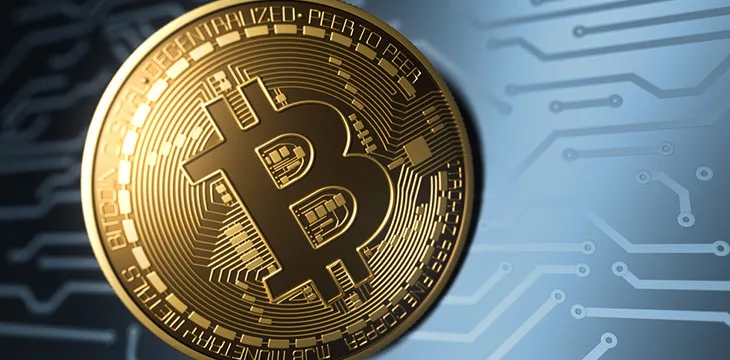|
Getting your Trinity Audio player ready...
|
This article was first published on Dr. Craig Wright’s blog, and we republished with permission from the author. Read Part 1, Part 2, Part 3, Part 4, Part 5, Part 6, Part 7, Part 8, Part 9, Part 10, Part 11, Part 12, Part 13, Part 14, Part 15, and Part 16.
Burns (2022) says that the primary motivation behind Bitcoin was to disrupt money by allowing faster and more secure forms of money. The same concept was taken up further by Caton and Harwick (2022, p. 1), who argued that Bitcoin and related systems were transforming money and the association of the “canonical presentation of money and its emergence, [while] the adoption of media of exchange across a network of exchange is supposed to reduce transaction costs: search costs, storage costs, transportation costs, and costs owing to a lack of divisibility of the goods being exchanged.”
Marthinsen and Gordon (2022) represent digital cash systems as an option for countries experiencing hyperinflation. In their analysis, the authors present sixteen attributes that must be met when introducing such a system and demonstrate how to incentivize governments and financial institutions to become fiscally prudent. Yet, the analysis once again fails to capture the alternative restructures and incentives that apply to the nations or political decisions that lead to hyperinflation. Unfortunately, in such an analysis, the argument treats the leaders of African nations as those within liberal Western countries.
Annotated Bibliography
Burns, S. (2022). The Silicon Savannah: Exploring the promise of cryptocurrency in Africa. In The Economics of Blockchain and Cryptocurrency (pp. 69–94). Edward Elgar Publishing. https://www.elgaronline.com/display/book/9781800882348/book-part-9781800882348-12.xml
While Burns (2022, p. 70) incorrectly refers to bitcoin as a ‘cryptocurrency,’ bitcoin’s purpose as a “privately issued medium of exchange” is correctly described. The author investigates the catalyst for the adoption of digital cash in Africa, referring to it as ‘cryptocurrency adoption.’ In the analysis, the author notes how Hayek’s reference of non-government money may potentially be implemented within Africa, in the light of the highly variable inflation rates and lack of monetary stability within the countries on the continent.
The paper analyses inflation, consumer price indexing, and the issue of demand and supply, noting that “Bitcoin has become so popular in Zimbabwe that demand has outstripped supply, causing it to trade at a sizable premium compared with prices in other nations” (2022, p. 74). Unfortunately, the scenario has also led to volatility limiting the effectiveness of the system. In response, the author demonstrated how stablecoins have provided opportunities in the region, despite the lack of certainty surrounding such systems. Yet, the lack of financial development and the increasingly high remittance cost across African nations are seen to provide additional opportunities in the region.
In addition, political instability and continuing economic uncertainty introduce several technological trends that show that changing demographic trends will likely lead to the replacement of M-PESA and other digital cash systems. Yet, the hostile regulation and lack of technological infrastructure leave a competitive market open, with mobile money open for disruption. Consequently, the African nations may eventually provide “a testing ground for Hayek’s proposition that competing private issuers would provide better, more stable monies than central banks” (Burns, 2022, p. 90).
Caton, J. L., & Harwick, C. (2022). Cryptocurrency, Decentralized Finance, and the Evolution of Money: A Transaction Costs Approach. Journal of New Finance, 2(4). https://doi.org/10.46671/2521-2486.1027
Caton and Harwick (2022, p. 12) argue that with Bitcoin, “a fully decentralized and automatic solution was developed and implemented” to enable a new form of monetary exchange. While such a claim is technically flawed, the authors analyze the transaction cost and nature of exchange and explain how reducing fees and the ability to minimize financial intermediation provide opportunities for the introduction of new, disrupted currencies. The analysis makes a presumption that the Lightning Network (Poon & Dryja, 2016) will solve the issues of the BTC network, allowing batched transactions to exist with lower fees.
In continuing their analysis, the authors misrepresent the nature of financial privacy, conflating Zcash with anonymity, while continuing to analyze the concept of public blockchains and anonymity with ‘decentralized finance.’ Finally, in this analysis, the authors continue to investigate mobile money, noting that M-PESA and its adoption can mean reduced transaction costs for African vendors, while undermining the argument presented in the paper through the analysis of buyer and seller behaviour in Kenya.
The paper continues to analyze Coase (1995), while misrepresenting the nature of the firm and tying it to the use of digital cash systems for the wrong reasons. Additionally, the analysis fails to cover the nature of having reduced fees, focusing instead on decentralization. In doing so, the authors represent a bill introducing bitcoin in El Salvador, not understanding that it is not a means to introduce legal tender, but a means to integrate a government payment system based on a digital currency account.
Marthinsen, J. E., & Gordon, S. R. (2022). Hyperinflation, Optimal Currency Scopes, and a Cryptocurrency Alternative to Dollarization. The Quarterly Review of Economics and Finance, 85, 161–173. https://doi.org/10.1016/j.qref.2020.12.007
Marthinsen and Gordon (2022, p. 161) have analysed the development of digital cash systems and presented an argument that technologies “have made it possible for nations suffering from hyperinflation to adopt a customized cryptocurrency, with attributes specifically designed so that any nation wishing to transition from hyperinflation to a more stable monetary environment could do so.” While such an approach is noble, the issue of how this would also “eliminate or sharply curtail ways in which governments and central banks can earn seigniorage returns” (Marthinsen & Gordon, 2022, p. 161) remains.
The research investigates traditional money and the introduction of new alternatives, including currency bonds, central-bank pegs, and fluctuating exchange rates. Through the analysis, the authors present a topic called “Cryptozation” based on adopting a stablecoin and argue for the advantages and disadvantages of a fixed-exchange-rate system. Yet, this presupposes a technology such as Bitcoin would be implemented, and the number of stablecoins would not be changed in adverse market conditions. Unfortunately, the concept is technologically flawed and misrepresents the underlying ability of individuals running a system to introduce newly minted digital currency.
The authors analyze the nature of backed and unbacked assets, looking into the concept of privacy but not anonymity. In this analysis, Marthinsen and Gordon (2022, p. 168) demonstrate that “most societies, individuals and organizations have a reasonable expectation of privacy in their economic activities,” while noting that governments require oversight to prevent and avoid money laundering or other illegal uses, including tax evasion and human trafficking. Overall, the authors capture many existing structures that need to be considered for a digital cash system, but fail to understand the problems with definitions that have been applied to such technologies.
References
Burns, S. (2022). The Silicon Savannah: Exploring the promise of cryptocurrency in Africa. In The Economics of Blockchain and Cryptocurrency (pp. 69–94). Edward Elgar Publishing. https://www.elgaronline.com/display/book/9781800882348/book-part-9781800882348-12.xml
Caton, J. L., & Harwick, C. (2022). Cryptocurrency, Decentralized Finance, and the Evolution of Money: A Transaction Costs Approach. Journal of New Finance, 2(4). https://doi.org/10.46671/2521-2486.1027
Coase, R. H. (1995). The nature of the firm. Springer.
Marthinsen, J. E., & Gordon, S. R. (2022). Hyperinflation, Optimal Currency Scopes, and a Cryptocurrency Alternative to Dollarization. The Quarterly Review of Economics and Finance, 85, 161–173. https://doi.org/10.1016/j.qref.2020.12.007
Poon, J., & Dryja, T. (2016). The bitcoin lightning network: Scalable off-chain instant payments.
Watch: The Bitcoin Masterclasses #1 Day 1 with Craig Wright: Confidentiality, Privacy, Anonymity, Party to Party

 07-18-2025
07-18-2025 





